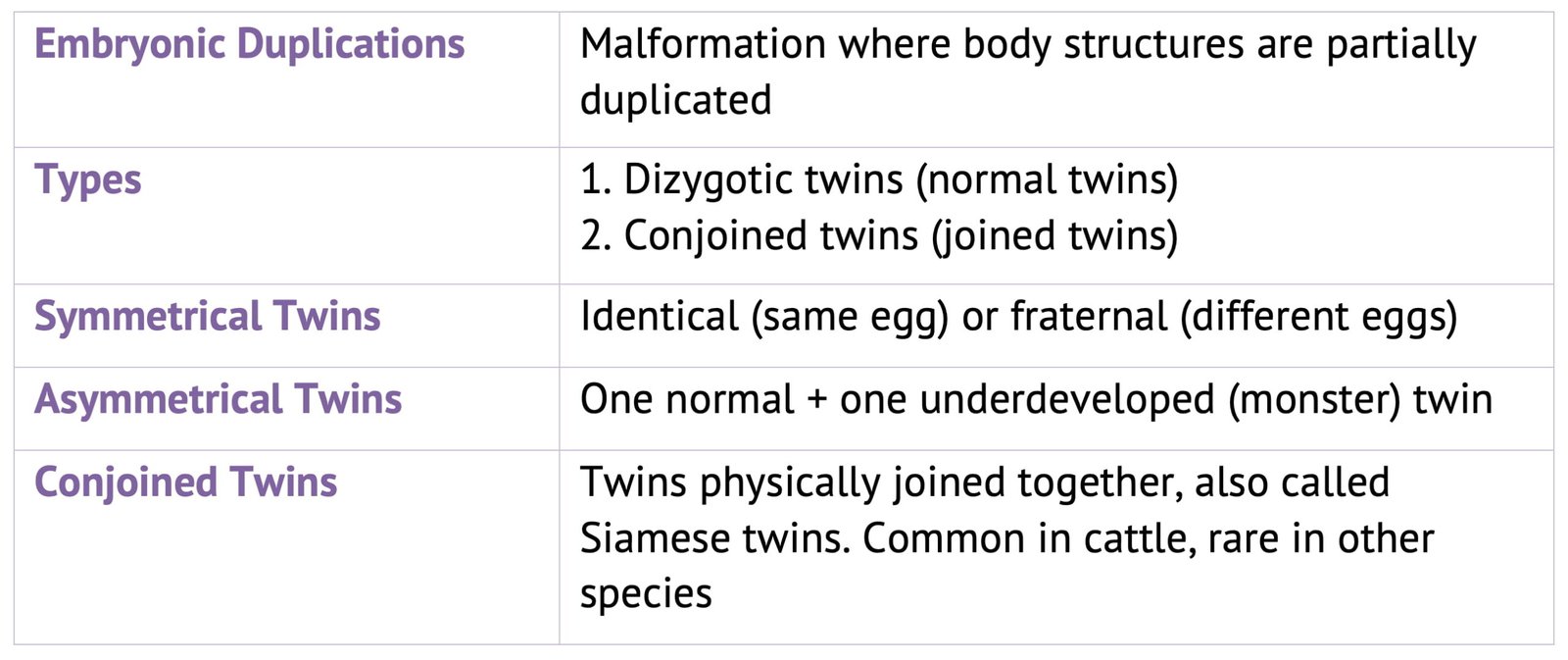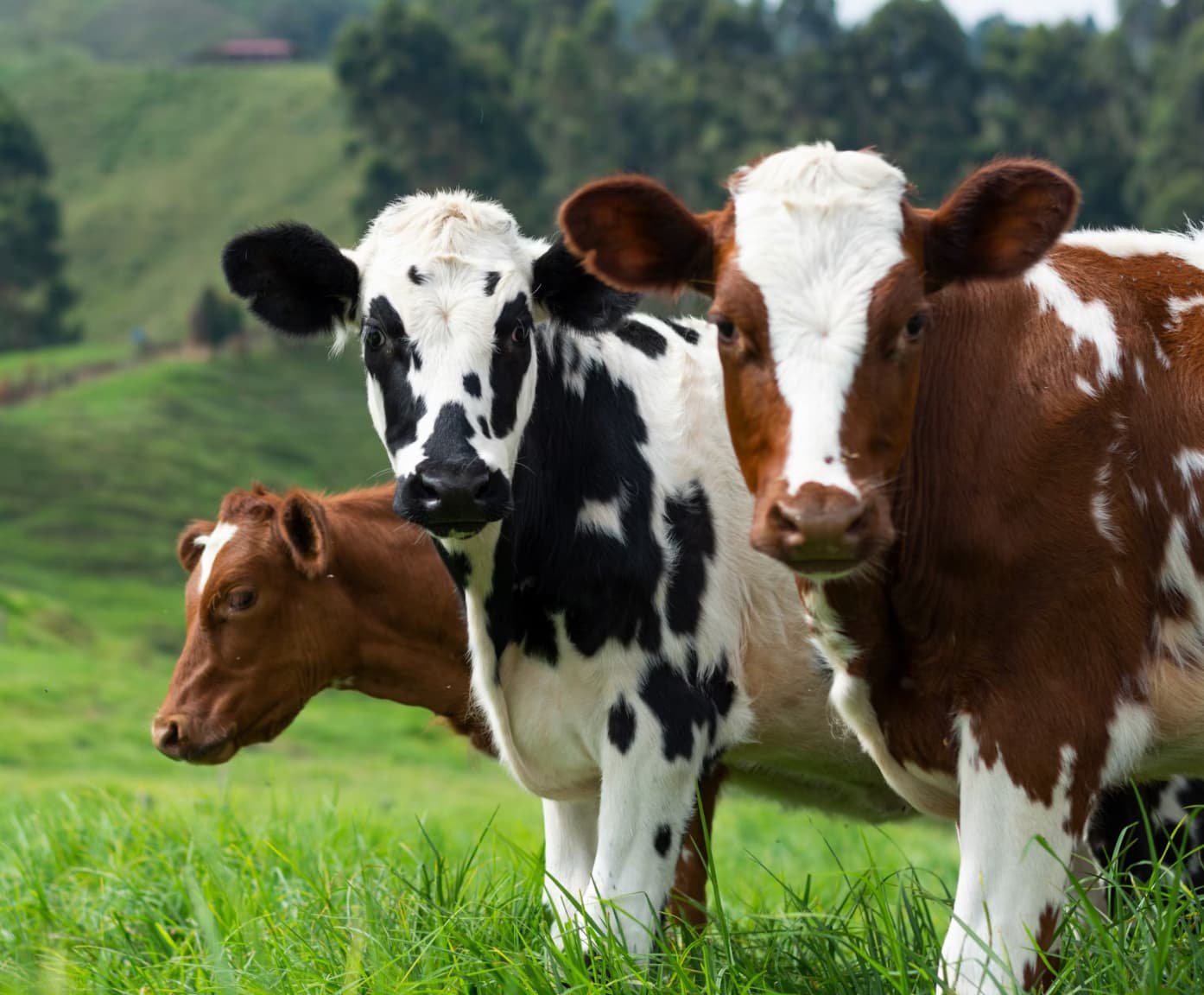TABLE OF CONTENTS
Embryonic Duplications
Embryonic duplications are malformations due to abnormal duplication of the germinal area in animals which giving rise to fetuses whose body structures are partially but not completely duplicated.

Embryonic duplications are:
- Dizygotic twins
- Conjoined twins
Free Monozygotic or Dizygotic Twins or Triplets
Free monozygotic or dizygotic twins or triplets can be symmetrical or asymmetrical:
- Symmetrical twins are either monozygotic or identical, or dizygotic or fraternal.
- Asymmetrical twins consist of a normal and an acardiac or monster individual.
Asymmetrical twins may include three types:
- Hemicardius
- Holocardius acephalus
- Holocardius amorphus or Amorphus globosus
1. Hemicardius
- A very imperfect individual but parts are recognizable, and
- A rudimentary heart is present.
2. Holocardius Acephalus
- The cranial part of very imperfect individual is lacking.
- No heart is present.
3. Holocardius Amorphus or Amorphus Globosus
- The general body form is unrecognizable.
- It may occasionally be seen, most commonly in the cow, but also in the mare, ewe and goat, attached to the placenta of the normal monozygotic or dizygotic twin.
- These very imperfect zygotes are parasitic upon the placenta of the normal twin and are never observed in single births.
Conjoined Twins
Conjoined twins in which the components or component parts are symmetrical are called diplopagus monsters or “Siamese” twins.
- Triplopagus is extremely rare.
- Conjoined twins arise from a single ovum and are monozygotic.
- Occurrence: about once in 100,000 bovine births.
- Most common in cattle but are seen rarely in sheep, pigs, dogs and cats and are exceedingly rare in horses.

